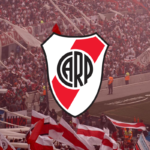


The three most famous Buenos Aires attractions are the Recoleta Cemetery, the Casa Rosada & Plaza de Mayo area and La Boca & El Caminito area. We give you a brief summary of why they are historically important and more importantly what else you can do nearby!
While traveling, many people prefer to avoid the “tourist traps” and head for the more underground spots instead. However, it would be a shame to visit Buenos Aires without having seen some of the most historically and culturally significant sights this city has to offer. Here we present the “touristy stuff” that you know deep down you have got to do. Follow these tips to best understand the importance of these landmarks and take advantage of what’s around.

This is hands down, the coolest cemetery in the world. Built in the early 1800’s, Recoleta cemetery was surrounded by what was a crusty gangsters paradise at the top of the riverbank. It wasn’t until the Northern migration at the turn of the 20th century, when the rich Porteños (Buenos Aires residents are know as port people or Porteños) moved on up from the neighborhoods Barracas, La Boca and San Telmo to Recoleta and the riff-raff had to move on out. Once this neighborhood became the posh residence of which more than a glimmer still stands, all cemetery plots were bought up by the wealthy families of the burgeoning city.
These fat cats had a lot to prove in terms of wealth and power and they did so famously through architecture. From the few mansions left on Avenida Alvear, you can see that money was no object and every family competed for the sickest digs. Thus, you can imagine that each family wanted their cemetery plot to look better than the ones to either side. From Italian marble to stained glass domes and statues, no extravagance was spared. Each family built their burial palace, and paid a fee for maintenance.
When you visit, you might wonder, “Why all the decay?” Well, as the years went on, Argentina took a pretty exponential turn for the worse. An epidemic of dictatorships and misguided national and foreign policy took a toll on the wealth of even the upper class. As these families moved down and out, the maintenance payments often stopped coming. And, although this is prime real estate, no one (not even the government) has a right to mess with the dead without permission from a family member, so these tombs are left to crumble. That’s OK by us though…it adds a taste of reality and death to what appears to be a super orderly and statuesque environment.
Everyone who goes to the cemetery knows that they have to go find Evita. We’ll be honest, her mausoleum is pretty basic so don’t be disappointed. Instead, focus on the insanity of the idea of the most powerful woman in the history of Argentina is buried surrounded by those who hated her the most. She was a bastard child who rose to fantastic fame, power and wealth by giving life to the poor while poking the rich right in the eye. The tension that runs through this cemetery is palpable.
Other things to look out for while stalking the dead are:
1. Staircases in each mausoleum leading down to the underground storage of up to 18 caskets.
2. Symbols such as the Greek letters XP meaning “Christos,” the owls representing solitude and watchful protection, the truncated column of a life cut short and the Masonic “G” inside a compass denoting participation in this secret society.
3. Cats, which number more the 40, who are taken care of by a group of volunteers ensuring their health.
What else can I do nearby?
The cemetery is open every day of the week, but if you visit on the weekend you can also take advantage of the Recoleta Fair. This open air artisanal fair pops up every weekend right behind the cemetery and is a great place to shop for hand crafted souvenirs or gifts.
Right across the street from the fair, at Plaza Naciones Unidas you’ll find the Floralis Genérica, a steel flower sculpture that closes and night and opens in the morning. With this iconic statue as a back drop, the Plaza Naciones Unidas makes for the perfect picnic spot.
Take a stroll down Calle Junin or Vincente López where you’ll find an abundance of al fresco cafes, bars, and restaurants. For a good happy hour check out Buller microbrewery, located directly across from the cemetery entrance. With a rooftop terrace, this is the perfect spot watch the sun set over the expansive cemetery.

The Pink House, original influence of Barbie’s mansion, sits like a crown atop the Plaza de Mayo. This can be considered the cradle of Argentina as it represents the true founding of Buenos Aires and is one of the top attractions. In the late 1500’s, Juan de Garay created the traditional Spanish plaza that is paramount to officially claiming land as a colony of the king. The original square had the Cabildo governing house, the cathedral and a fort to keep an eye on the shallow yet threatening natural boundary. The fort served more as a convenient excuse for the men of Buenos Aires to shirk responsibility in the interior of the country as there were always “pirates approaching” when the countrymen needed the support of their well-equipped comrades.
Soon the fort fell into disuse and in 1713, it was replaced with a masonry building that would, through various renovations, become the Casa Rosada we know today. As the country garnered more wealth, the front portico was added along with inner patios, wrought-iron and marble statues.
But why pink? There are a few suspicions, one of which I actually buy. Some say that the pink color was chosen by the then-President Domingo Sarmiento as a way to unify a country divided by politics represented by Blue (and white) and Red. By mixing these colors, locals say that he was encouraging warm sweet feelings between the Federalists and Unitarians. However, I really doubt he went to the local paint store and sat for hours while they mixed different colors to arrive at the ideal pink. The version that seems most plausible is that in the olden days, buildings were painting with a mix of calcium white and a little animal fat to make the surface impermeable. The fat always had a little blood in it, and thus the rosy hue. Other buildings such as the Hacienda mansion built around the same time in Mataderos were (and still are) this color too.
The sentimental importance of the Casa Rosada is basically as the backdrop to every protest and national crisis since the birth of Buenos Aires. From the Revolution of Mayo of 1810 declaring the beginning of independence from Spain, to the military bombings attempting to kill President Perón, this has always been a place to air grievances and demand change. You see it in the background of photos of every important gathering in the country’s history including those of the Madres de la Plaza de Mayo and of course the raging hearts that would come for a taste of Evita’s powerful sermons.
When you visit the Casa Rosada, there will likely be a protest taking place so take a seat on the benches around the fountains and take it all in. For those who love visiting old buildings, there is a free tour. However, the Casa is definitely more impressive from the outside so skip that unless you are a Capitol Hill fanatic.
What else can I do nearby?
While you’re in the ‘hood and already being a tourist, head down the northern side of the Casa Rosada and cross over to Puerto Madero. This change in scenery exemplifies the contrast that Buenos Aires does so well, and also situates you ideally for a delicious lunch. Le Grill is a high end parrilla known for serving large portions of delicious steak grilled to perfection. A lunch at Le Grill is guaranteed to be one of the best meals you have in Buenos Aires.
If you’re hoping to avoid a hefty price tag on lunch, you should definitely still pass through Puerto Madero but you may want to choose a different neighborhood for lunch. For lighter fare, head up to Farinelli in Retiro for a selection of seasonal salads and sandwiches. Or, if you’re craving pizza, El Cuartito is a Buenos Aires institution that serves up some of the best pizza and empanadas in town.
If you’re looking to do some shopping or exchange money head to Florida street. This bustling pedestrian street is packed with leather shops, malls, souvenir shops, and more.

The port of La Boca was born out of a need for easier access to South America’s wealthy interior. Conveniently located at the end of the earth, this was (and still is) out of the way enough to allow illegal endeavors to blossom. Founded by the C students who always end up richer than the A+ nerds, this port ran stupendously on dirty money and desperate immigrants. The Spaniards who technically ruled the land, began with a loose grip and were ultimately incapable of controlling the region. Meanwhile, here you could find the best ship builders in the world, an endless sea of day laborers, the birth of the first local generation and a style of corruption that locals shame and yet continue to employ to this day.
Although it was always the poorest part of town, La Boca had it’s groove. Haphazard buildings were brightly colored with leftover paint from the ships and the Italians publicly flaunted the famous cocoliche comedy sketch that would lead to the Argentine slang of Lunfardo. A nightlife that seeped into day, full of music, celebration and banter, it was a cesspool of fun when the workday was done. That is, until it became too small for the bigger, more modern ships and Perón (purposefully or not) flicked it off like an old scab. The port moved north to Puerto Madero and the factories moved out into industrial parks in the provinces. The residents of La Boca lost their jobs, their income and lifestyle. The ‘hood slipped into utter despair.
So how did it become the ridiculous spectacle that we see today? It’s all thanks to an artist named Benito Quinquela Martin. As a young child of La Boca, he was talent spotted for his artistic capabilities and sent to one of the best art academies in the country. As a young adult, he became a world famous painter and even worked for Mussolini. He never forgot his origins, though, and upon his return in the mid-1900’s, he was heartbroken by the look of his childhood home. He wanted to give back to his community and with the help of famous tango legend Juan de Dios Filiberto, he created what we now know as El Caminito.
El Caminito, the famous street of colorful houses, was an invention of these two men to bring the original spirit of light and joy back to the neighborhood. Statues and murals along this cobble-stoned lane represent the integral parts of their society; La Canción (the song, representing the tango), La Madre (the mother), Esperando La Barca (awaiting the boat) and of course, Los Bomberos (the first volunteer fire department).
They also encouraged the creation of an open-air museum where the neighbors could exhibit their work and take pride in their talent. Nowadays, you can buy these works of art at surprisingly good prices.
What else can I do nearby?
Since the income of El Caminito doesn’t really reach most of the neighbors and the government still forgets they are part of Capital Federal, many of them have taken it upon themselves to fight for survival. We suggest you pay a visit to a coop called Los Pibes del Playón located at Del Valle Iberlucea 938 on your way to La Bombonera stadium. This is a community project that, among other things, teaches the neighbors make alfajor cookies and other goods to sell and thus bring home a stable income. Not only do they create jobs, but they make some of the best sweets in the city.
If you’re looking for a little breath of fresh air and a snack, check out the café of the Proa museum that overlooks the waterfront. While their vibe isn’t very reminiscent of the neighborhood, it’s still a favorite with good food and a great bookstore to peruse.
For football fans, taking a tour of the famed “Bombonera” is an absolute must. The Boca juniors stadium, which earned the “chocolate box” as its nickname thanks to it’s unusual shape, is known for its impressive acoustics and being a very intimidating stadium for visiting teams. The private futbol fanatics tour combines a tour of Argentina’s most famous stadium with some of the most picturesque neighborhoods in Buenos Aires.
Other notable attractions you should consider adding to your list are:
Teatro Colón
Mataderos Fair
San Telmo Fair
Palermo Soho Shopping District
Buenos Aires Futbol game
General list of things to do in Buenos Aires
Have fun and enjoy your time in Buenos Aires!
(US) 910 795 2992
(AR) +54 9 11 —- —-
©Copyright 2025 Landingpadba, LLC